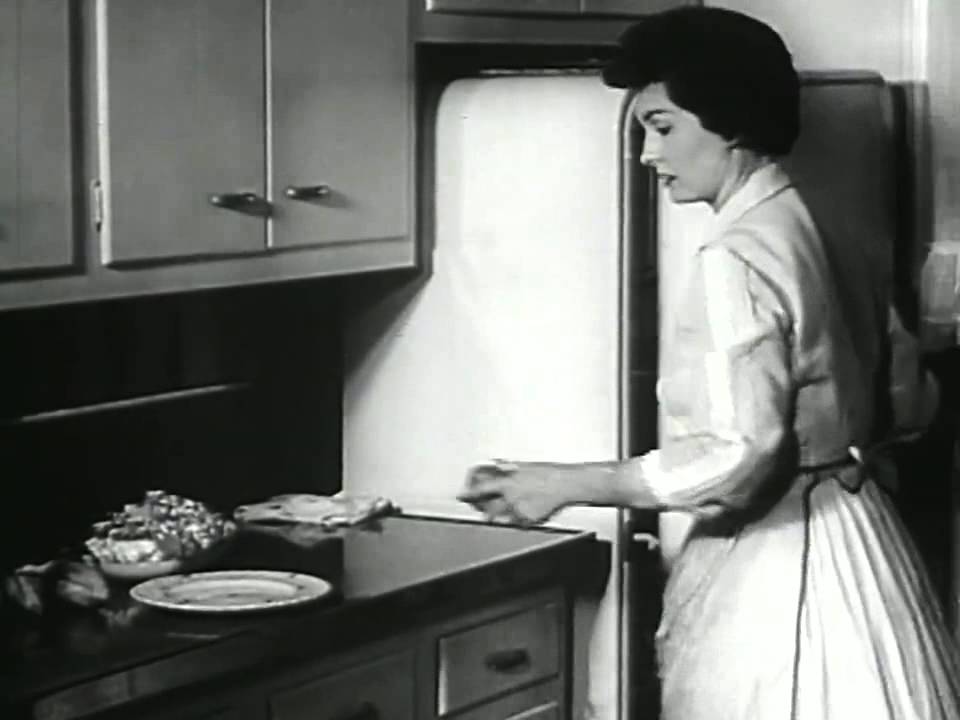more at
“Harold Phillips, president of the National Association of Broadcasters speaks… about the importance of radio.” Historic radio clips in the film include
1928 presidential candidate Alfred Smith,
Franklin Roosevelt; FDR saying “It is my firm belief that the only thing we have to fear is fear itself,”
King Edward VIII of England abdicating his throne, Zepplein Hindenburg explodes,
Japanese attack Pearl Harbor, FDR saying “December 7, 1941, a date which will live in infamy.”
Public domain film from the Prelinger Archives, slightly cropped to remove uneven edges, with the aspect ratio corrected, and mild video noise reduction applied.
The soundtrack was also processed with volume normalization, noise reduction, clipping reduction, and/or equalization (the resulting sound, though not perfect, is far less noisy than the original).
…The most common type of receiver before vacuum tubes was the crystal set, although some early radios used some type of amplification through electric current or battery. Inventions of the triode amplifier, motor-generator, and detector enabled audio radio. The use of amplitude modulation (AM), with which more than one station can simultaneously send signals (as opposed to spark-gap radio, where one transmitter covers the entire bandwidth of spectra) was pioneered by Fessenden and Lee de Forest…
During the mid-1920s, amplifying vacuum tubes (or thermionic valves in the UK) revolutionized radio receivers and transmitters. John Ambrose Fleming developed an earlier tube known as an “oscillation valve” (it was a diode). Lee de Forest placed a screen, the “grid” electrode, between the filament and plate electrode, creating the triode. The Dutch engineer Hanso Schotanus à Steringa Idzerda made the first regular wireless broadcast for entertainment from his home in The Hague on 6 November 1919. He broadcast his popular program four nights per week until 1924 when he ran into financial troubles.
On 27 August 1920, regular wireless broadcasts for entertainment began in Argentina, pioneered by the group around Enrique Telémaco Susini, and spark gap telegraphy stopped. On 31 August 1920 the first known radio news program was broadcast by station 8MK, the unlicensed predecessor of WWJ (AM) in Detroit, Michigan. In 1922 regular wireless broadcasts for entertainment began in the UK from the Marconi Research Centre 2MT at Writtle near Chelmsford, England. Early radios ran the entire power of the transmitter through a carbon microphone. In the 1920s, the Westinghouse company bought Lee de Forest’s and Edwin Armstrong’s patent. During the mid-1920s, Amplifying vacuum tubes (US)/thermionic valves (UK) revolutionized radio receivers and transmitters…
The question of the ‘first’ publicly targeted licensed radio station in the U.S. has more than one answer and depends on semantics. Settlement of this ‘first’ question may hang largely upon what constitutes ‘regular’ programming.
It is commonly attributed to KDKA in Pittsburgh, Pennsylvania, which in October 1920 received its license and went on the air as the first US licensed commercial broadcasting station on November 2, 1920 with the presidential election results as its inaugural show, but was not broadcasting daily until 1921…
In 1933, FM radio was patented by inventor Edwin H. Armstrong. FM uses frequency modulation of the radio wave to reduce static and interference from electrical equipment and the atmosphere. In 1937, W1XOJ, the first experimental FM radio station, was granted a construction permit by the US Federal Communications Commission (FCC)…
In 1954 Regency introduced a pocket transistor radio, the TR-1, powered by a “standard 22.5V Battery”. In the early 1960s, VOR systems finally became widespread for aircraft navigation; before that, aircraft used commercial AM radio stations for navigation. (AM stations are still marked on U.S. aviation charts). In 1960 Sony introduced their first transistorized radio, small enough to fit in a vest pocket, and able to be powered by a small battery. It was durable, because there were no tubes to burn out…
The National Association of Broadcasters (NAB) is a trade association, workers union, and lobby group representing the interests of for-profit, over-the-air radio and television broadcasters in the United States. The NAB represents more than 8,300 terrestrial radio and television stations as well as broadcast networks.
As of November 1, 2009, the president and CEO of the NAB is Gordon Smith, a former United States Senator from Oregon…

